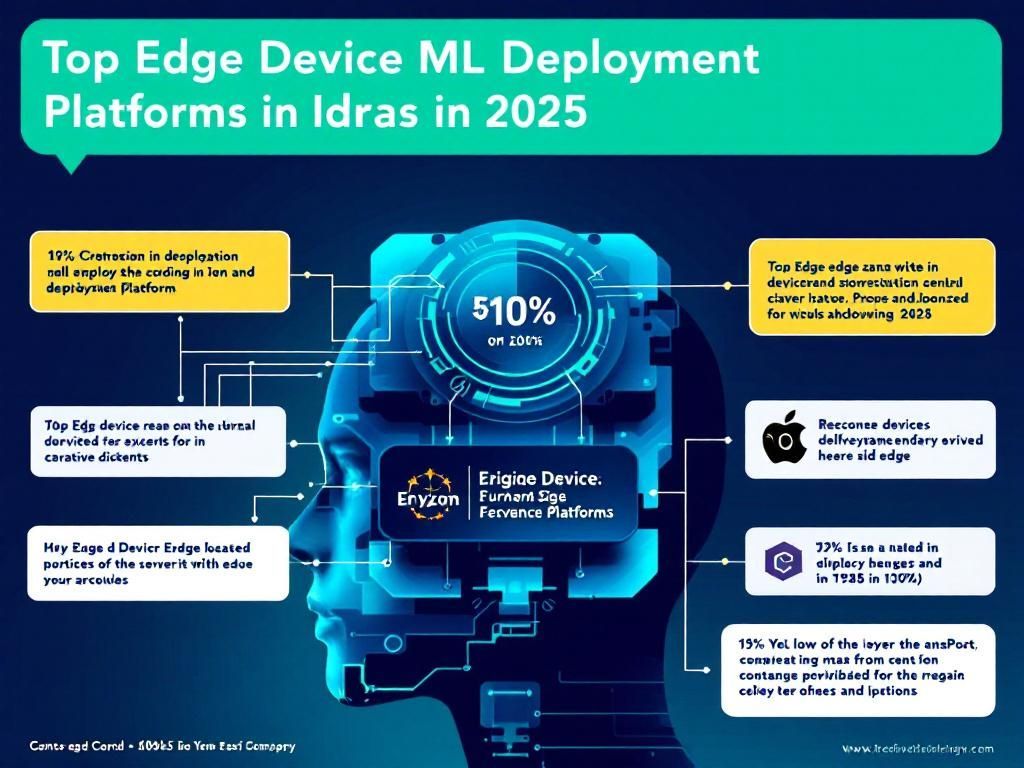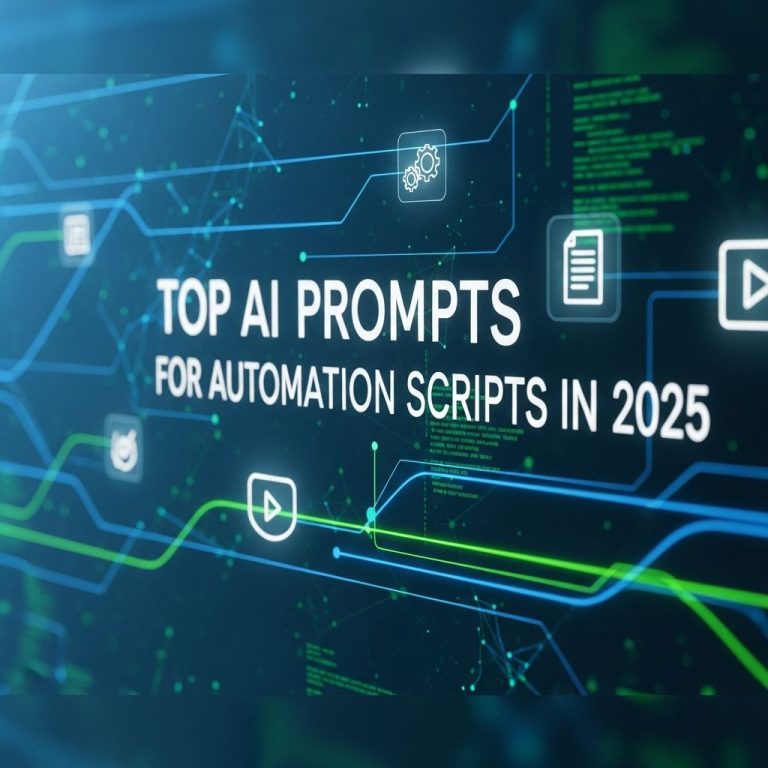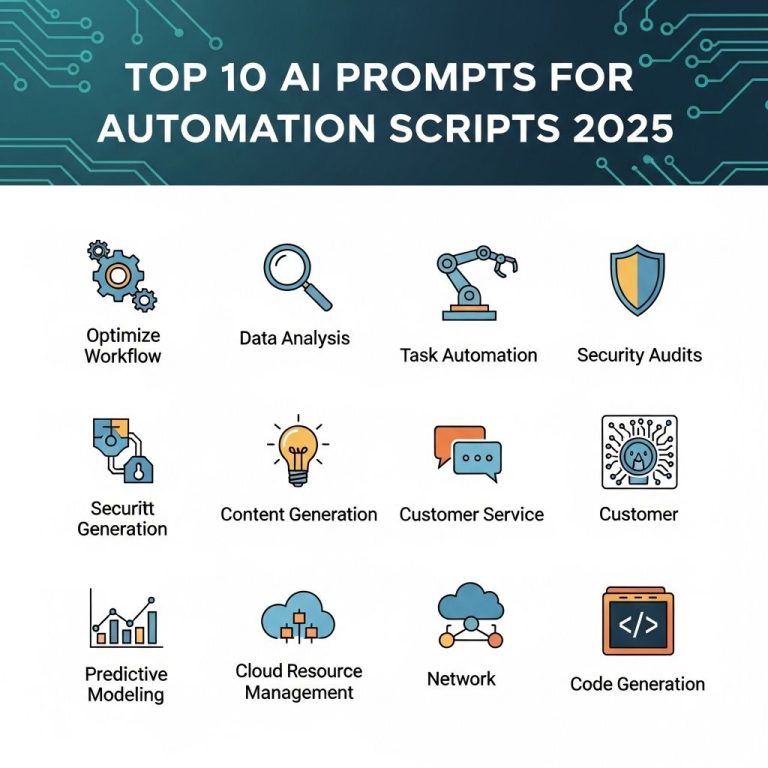As we move further into the era of the Internet of Things (IoT) and artificial intelligence, the need for efficient and powerful edge device machine learning (ML) deployment platforms is greater than ever. These platforms allow businesses to process data closer to where it is generated, reducing latency and bandwidth usage compared to traditional cloud computing models. In 2025, we can anticipate several leading platforms that will stand out due to their unique features, scalability, and ease of use. This article explores these platforms and what makes them essential tools for businesses aiming to implement edge ML solutions.
Understanding Edge Computing and Machine Learning
Before diving into specific platforms, it is crucial to understand the concepts of edge computing and machine learning.
What is Edge Computing?
Edge computing involves processing data near the source rather than relying on a central data center. This approach offers several advantages:
- Reduced latency: Fast data processing results in quicker insights.
- Lower bandwidth usage: Less data needs to be transmitted to the cloud, saving on costs and improving performance.
- Improved security: Sensitive data can be processed locally, minimizing exposure to potential breaches.
Machine Learning at the Edge
Machine learning enables devices to learn from data and improve their performance over time. When combined with edge computing, ML can:
- Facilitate real-time decision-making.
- Enhance predictive maintenance in industrial settings.
- Optimize resource usage in smart environments.
Key Features of Top Edge ML Deployment Platforms
When evaluating different edge ML deployment platforms, consider the following key features:
- Ease of Deployment: Platforms should offer simple processes for deploying models on edge devices.
- Scalability: The ability to scale across multiple devices and locations is vital.
- Interoperability: Ensure compatibility with various device types and cloud services.
- Security: Robust security features must protect sensitive data.
- Support for Multiple Frameworks: The platform should support various ML frameworks such as TensorFlow, PyTorch, and ONNX.
Leading Edge ML Deployment Platforms in 2025
Here are some of the most prominent edge ML deployment platforms expected to dominate the market in 2025:
1. NVIDIA Jetson
The NVIDIA Jetson platform is a powerful ecosystem designed for AI at the edge. It provides:
- High-performance GPUs optimized for machine learning tasks.
- A wide range of tools for development, including the JetPack SDK.
- Support for various frameworks and libraries.
2. Microsoft Azure IoT Edge
Azure IoT Edge extends Azure’s cloud capabilities to edge devices. Its features include:
- Integration with Azure machine learning services.
- End-to-end security from the cloud to the edge.
- Support for running complex ML models locally.
3. Google Coral
Google’s Coral platform is tailored for edge AI solutions. It offers:
- A dedicated Edge TPU for fast ML inferencing.
- Support for TensorFlow Lite models.
- An easy-to-use development environment.
4. AWS IoT Greengrass
Amazon’s AWS IoT Greengrass allows users to run local compute, messaging, and data management for connected devices. Key features include:
- Seamless integration with AWS Lambda for running code locally.
- Machine learning inference capabilities at the edge.
- Robust device management and monitoring tools.
5. IBM Edge Application Manager
This platform helps manage and automate the deployment of edge applications. It includes:
- AI-driven insights for optimizing applications.
- Automation tools for scaling across multiple locations.
- Advanced security features for safeguarding data.
Comparative Overview of Edge ML Platforms
| Platform | Key Feature | Best Use Case |
|---|---|---|
| NVIDIA Jetson | High-performance GPUs | Real-time image processing |
| Microsoft Azure IoT Edge | Cloud integration | Enterprise applications |
| Google Coral | Edge TPU | Small device applications |
| AWS IoT Greengrass | Local compute | Distributed systems |
| IBM Edge Application Manager | AI-driven insights | Automated deployments |
Challenges in Edge ML Deployment
While the benefits of edge ML deployment platforms are significant, several challenges must be addressed:
- Connectivity Issues: Reliable network connectivity is crucial for data synchronization.
- Device Compatibility: Ensuring compatibility across diverse hardware can be difficult.
- Data Privacy: Managing data protection regulations can complicate deployments.
The Future of Edge ML Platforms
As technology evolves, so will edge ML deployment platforms. Innovations that we can expect to see include:
- Enhanced AI capabilities, such as federated learning.
- Greater emphasis on energy efficiency and sustainability.
- Improved user interfaces for easier management and deployment.
In conclusion, the landscape of edge device machine learning deployment platforms is expanding rapidly. With advancements in technology and increasing demand for real-time processing, platforms like NVIDIA Jetson, Microsoft Azure IoT Edge, Google Coral, AWS IoT Greengrass, and IBM Edge Application Manager will continue to shape the future of edge computing.
FAQ
What are the leading edge device ML deployment platforms in 2025?
In 2025, leading edge device ML deployment platforms include NVIDIA Jetson, Google Coral, AWS IoT Greengrass, Microsoft Azure IoT Edge, and IBM Watson IoT.
How do edge device ML deployment platforms improve performance?
Edge device ML deployment platforms improve performance by processing data closer to the source, reducing latency, and minimizing bandwidth usage, which is essential for real-time applications.
What industries can benefit from edge device ML deployment in 2025?
Industries such as manufacturing, healthcare, automotive, and smart cities can benefit significantly from edge device ML deployment in 2025, enabling smarter operations and enhanced decision-making.
What are the key features to look for in an edge device ML deployment platform?
Key features to consider include ease of integration, support for various ML frameworks, scalability, security measures, and the ability to manage and monitor devices remotely.
How do I choose the right edge device ML deployment platform for my organization?
Choosing the right edge device ML deployment platform involves assessing your specific use case, required features, budget, and the platform’s compatibility with existing infrastructure.




